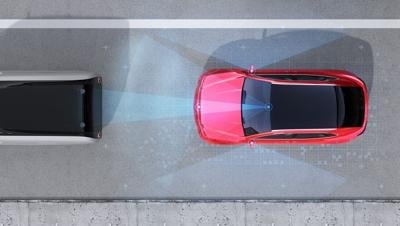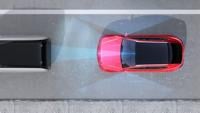We trust advanced driver assistance systems to be vigilant when we are not, to warn us when we drift, to brake when we hesitate, to see what we miss. What happens when the very systems we depend on are quietly out of alignment?
Advanced Driver Assistance Systems (ADAS) are no longer optional add-ons for luxury cars — they’re standard features across most new vehicles, designed to prevent crashes, protect pedestrians, and save lives. However, a new white paper from Ascential Technologies has revealed a troubling reality: if these systems are not calibrated adequately after repairs, they might as well not exist.
Crash tests on a 2024 Nissan Altima revealed that vehicles with poorly calibrated or uncalibrated sensors plowed into obstacles without issuing a warning, as their safety systems essentially “switched off.” Even cars with modest mileage, just under 13,000 miles, showed performance drift before any calibration was attempted
It’s a revelation that could transform how repair shops approach safety and liability. And it raises a bigger question: why are many facilities still relying on mobile calibration in mechanic bays or parking lots, when manufacturers increasingly require static calibrations in controlled environments?
When Safety Systems Fail Silently
The Ascentialstudy, conducted at the Transportation Research Center and co-sponsored by Dealer Tire’s SentricADAS and Burke Porter, compared vehicles under four conditions: baseline (factory calibration, 12,900 miles), no calibration after sensor disturbance, poor calibration under improper conditions, and proper OEM calibration in a static facility.
The results were stark:
- No calibration: Systems failed outright, with the car striking obstacles and pedestrians in test scenarios.
- Poor calibration: Performance was inconsistent and unpredictable, sometimes worse than the baseline.
- Good calibration: Factory-level performance was restored or improved, more than doubling stopping margins in pedestrian scenarios
“Proper calibration is not optional,” the white paper concluded. “It is the difference between a system that saves lives and one that fails silently.”
The Market Reality: Static vs. Mobile
To better understand the implications for shops, we spoke with John Voulgarakis of Lighting Auto Service, whose team recently conducted a market study on ADAS calibration for a 2025 Honda Ridgeline.
The study found that calibration costs for the exact vehicle varied widely:
- Local static center: $2,000 (plus towing)
- Industry static center average: $2,800
- Mobile provider: $1,500–$1,900
- Dealership: $1,600 (but often incomplete, skipping OEM collision procedures)
On paper, mobile calibration appears to be cheaper. In practice, Voulgarakis says, it’s not meeting manufacturer requirements and it’s putting drivers at risk.
“Static calibration requires a controlled shop environment, level floors, precise lighting, and clear space to set targets within millimeter tolerances,” he explained. “When calibrations are done in mechanic bays or parking lots, those conditions simply don’t exist. Accuracy is compromised, and with ADAS, being a millimeter off can mean missing a pedestrian by several feet.”
Why Mobile Calibration Falls Short
Voulgarakis outlined five reasons mobile setups can’t meet OEM standards:
- Environment Control Is Missing
Static calibration requires perfectly level floors, consistent lighting, and wide, clear zones. Parking lots and general shop bays rarely meet those tolerances. - Target Accuracy
OEMs demand laser-guided or proprietary target setups. Mobile technicians often rely on manual measurements or shortcuts, which can introduce errors. - Power and Network Requirements
Some calibrations require stable power supplies, OEM scan tools, or subscription updates — not always available on the road. - Time Pressure
A complete static calibration can take 2–4 hours. Mobile models often emphasize volume, cutting corners on validation test drives or post-calibration scans. - Dynamic vs. Static Confusion
While older vehicles allowed dynamic (road-driven) calibration, many new systems now require static-only calibration. Some mobile providers still attempt to “force” dynamic methods when static is mandated.
“The bottom line,” said Voulgarakis, “is that static calibration isn’t just safer — it’s the only way to meet OEM requirements and protect the customer. Anything less is gambling with lives.”
Economics and Liability
Cost is a significant factor in the debate. A 2023 AAA study found that ADAS components and calibration account for nearly 38% of repair bills, adding an average of $1,540 even on minor front-end claims. For shops, that’s often a point of friction with insurers and customers.
Yet most carriers now reimburse calibration charges, and many require proof before paying claims, a sign that the industry is aligning around static calibration as essential, not optional.
Failure to calibrate properly doesn’t just raise safety concerns; it opens the door to lawsuits. The John Eagle Collision case, where a body shop deviated from OEM repair procedures and was hit with a $31.5 million verdict, looms large over the industry. ADAS introduces similar risks: one improperly calibrated sensor could be enough to prove negligence in court.
Regulatory Pressure
By September 2029, all new light vehicles in the U.S. must be equipped with pedestrian-detecting automatic emergency braking under federal rule FMVSS 127. Vehicles with mis-calibrated sensors may not just endanger drivers — they may fall out of compliance entirely
Meanwhile, the National Highway Traffic Safety Administration (NHTSA) has warned automakers that “impractical recalibration requirements” could be treated as safety defects. In Europe, regulators are already moving to include ADAS checks in periodic inspections, with expectations that the systems remain functional long after a car leaves the showroom.
The Takeaway
The evidence is mounting: mobile shortcuts fail to meet OEM standards, leaving safety systems compromised. Regulators are watching, insurers are paying closer attention, and lawsuits are inevitable if shops continue to cut corners.
Static calibration may be more expensive upfront, but it’s the only path that delivers accuracy, compliance, and safety. Anything less isn’t just bad business; it’s reckless.




